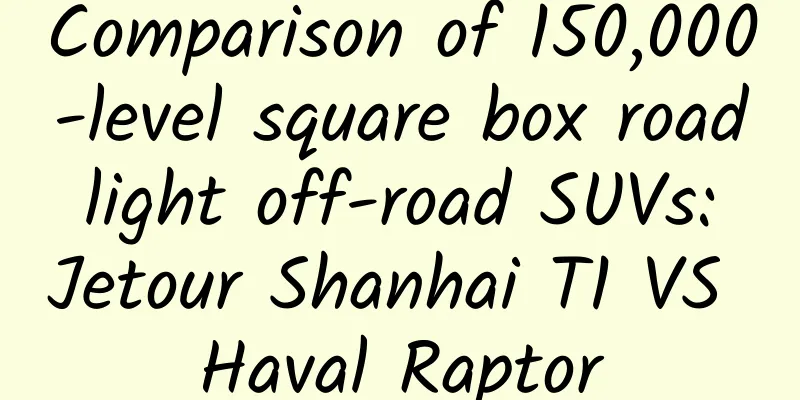Where can I pick up "star fragments"?

|
Meteorites, also known as "meteors", are unburned rock or iron materials from outer space that have fallen to the surface of the Earth or other planets. As the "messenger" of the universe, it not only brings scientific researchers the opportunity to explore other planets and the wider universe, but also attracts a lot of attention due to its mysterious color. Copyright image, no permission to reprint Since it has fallen on Earth, you must also want to know where to pick up such a "piece of star"? Currently, the most suitable areas on Earth for finding meteorites are the desert (a natural "drying box" for meteorite preservation) and Antarctica (a natural "refrigerator" for meteorite preservation). In recent years, scientific researchers and meteorite hunting enthusiasts have collected a large number of meteorites in the deserts of northern and western China. The research team of Li Shijie, a researcher at the Institute of Geochemistry, Chinese Academy of Sciences, and their counterparts at home and abroad have conducted a series of studies on the distribution, mineralogy, petrology, genesis, cosmic ray exposure history, and surface accumulation time of meteorites found in China's deserts. The results have been published in academic journals at home and abroad. This has a certain reference value for scientific researchers, meteorite enthusiasts, and meteorite hunters to carry out meteorite research and collection work. Where are China's desert meteorites? my country's desert meteorites are mainly distributed in the Gobi region in the west and north of China. The International Meteorite Society calls the specific area where meteorites are found a dense meteorite collection area (note: this concept is somewhat misleading, and the discovery of meteorites does not necessarily mean that there are dense meteorite collection areas). So far, China has discovered 42 meteorite-rich areas. Distribution map of meteorites in China's deserts (Fan et al., 2022). However, the number of meteorites collected in different meteorite-rich areas varies greatly. A team of scientific researchers and meteorite hunters have collected a large number of meteorites in some meteorite-rich areas around the Kumtag Desert, such as the Kumtag meteorite-rich area (64 meteorites collected), the Alatage Mountain meteorite-rich area (47 meteorites collected), the Loulan Yizhi meteorite-rich area (46 meteorites collected), the Hami meteorite-rich area (21 meteorites collected), and the Lop Nur meteorite-rich area (15 meteorites collected) (Figure 1). There are also enriched areas where only one meteorite was collected, such as the Qira enriched area and the Tazhong enriched area on the edge of the Taklimakan Desert. Types of Desert Meteorites in China As we all know, rare things are valuable, and the same is true for meteorites. For example, lunar meteorites and Martian meteorites are very popular among researchers and meteorite enthusiasts due to their extremely high scientific research value. So how many meteorites have been collected in China's desert areas, and are there any special types of meteorites among them? Unfortunately, lunar meteorites and Martian meteorites have never been collected in China's desert areas so far. A total of 300 meteorites officially named by the International Meteorite Society have been collected in China's deserts, including 287 ordinary chondrites, 6 iron meteorites, 1 CO3 chondrite, 1 diogenite, 1 ureilite, 1 brachinite, 1 eucrite and 1 EL7 chondrite. Of course, this list is constantly being updated! Photos of hand specimens of some Chinese desert meteorites | The pictures were provided by meteorite hunters (or collectors) Wang Zijian, Zhao Yuxian, Chen Pengli, Ma Weijun, Wang Peng, Zhao Zhiqiang, Guo Jianbin and Wen Xinping. After meteorite pairing (all meteorites from the same landing are counted as one), ordinary chondrites account for 72% of China's desert meteorites, including 63 H-group meteorites, 133 L-group meteorites and 20 LL-group meteorites. Advantages of picking up meteorites in the desert Collection Advantages Compared with collecting meteorites in Antarctica, collecting meteorites in desert areas has significant advantages. First, the temperature in Antarctica is low throughout the year and the working environment is harsh; although the temperature in the desert is relatively high, the climate is still relatively pleasant compared to Antarctica; secondly, in terms of transportation, going to the desert is more convenient than going to Antarctica, and even "one person and one car" can carry out the work. Going to Antarctica requires huge expenses and a lot of manpower support; the economic cost required for scientific researchers and meteorite hunting teams to go to the desert is much lower than going to Antarctica. The above advantages can greatly increase the participation of non-scientific researchers in collecting desert meteorites. Research advantages Meteorites that land in Antarctica usually move with the movement of glaciers. When the moving glaciers are blocked by mountains, the meteorites in the glaciers will be enriched at the junction of the mountains and glaciers, which greatly increases the difficulty of identifying pairs of meteorites. However, meteorites that land in desert areas can often be preserved for a long time at the landing point, which is conducive to the identification of meteorites. In addition, the landing position information recorded by the meteorite shower samples in the desert area is particularly important for studying the meteorite breakup process, landing direction and incident angle. Since the meteorite samples in the meteorite shower are large in number and mass, they are easier to be found than individual meteorites with smaller mass. Therefore, the meteorite shower samples are more important for calculating the accumulation time of meteorites in the discovery area. Where is the best place in China to look for meteorites? Research has found that meteorite landings are random events that are relatively evenly distributed on the global surface. Therefore, areas suitable for searching for meteorites must have a relatively stable surface environment and an older surface age. A large number of meteorites have been found in the southern part of the Hami enrichment area, and at least five meteorite showers have been found there, indicating that this area is more suitable for collecting meteorites. In order to evaluate the area's ability to preserve meteorites, the research team estimated the time it took for meteorites to accumulate in the area. Distribution map of meteorites collected in the named areas of Hami, Kumtag and Alatage Mountains. Area C is currently the most suitable area for collecting meteorites in the Chinese desert (Fan et al., 2022) Since there has been no systematic search for meteorites in the area before, it would be more accurate to estimate the accumulation time of meteorites by using meteorite shower samples that are more easily found in the area (large quantity and large mass). The research team combined previous research on meteorite flux with information such as the mass and distribution area of the five meteorite showers in the area, and estimated that the accumulation time of meteorites in the area is no less than 10,000 years, which shows that this area is currently the most suitable area for collecting meteorites in the Chinese desert, and it is very likely to find rare types such as lunar or Martian meteorites. In 2019, two meteorite hunters found a 2.54 kg brachinite meteorite in the Gobi region south of Hami. Currently, there are only 54 brachinite meteorites named by the International Meteorite Society (excluding pairs of meteorites). This type of meteorite is rarer than lunar and Martian meteorites, which may also indicate that the Gobi region south of Hami has a long meteorite accumulation period. In addition, the large area of light-colored granite distribution in southern Hami makes it easy for searchers to identify meteorites in the field (usually meteorites are darker in color). There are also railways and roads nearby, with convenient transportation. It is close to cities, towns or mining areas, which facilitates the supply of field materials. These are all good conditions for conducting meteorite searches. Source: China National Astronomical Service Author: Li Shijie, a researcher at the Institute of Geochemistry, Chinese Academy of Sciences, mainly engaged in meteorite research; Fan Yan is a PhD candidate jointly trained by Northwest University and the Institute of Geochemistry, Chinese Academy of Sciences. His research interests mainly focus on planetary science. This article has been authorized. Please contact the original author for reprinting. The images on the cover and watermark of this article are from the copyright gallery, and the image content is not authorized for reproduction |
<<: Shanghai official reminder! Doing this is very dangerous!
Recommend
The "father of lithium batteries" predicts that Apple's car will be officially unveiled this year and will be available in 2025 at the earliest
It is a well-known fact that Apple is going to bu...
Create a home theater, Sony HT-S350 soundbar comprehensively enhances your viewing experience
There is no doubt that watching TV is the most im...
Four tools to double the quality of your Android code!
In this article, I will introduce how to improve ...
What challenges do reptiles face when moving from land to sea?
On August 27, 2024, Jiang Dayong, professor at th...
Why can’t rainstorm forecasts be 100% accurate?
Why are increasingly severe rainstorms difficult ...
How to improve the conversion rate of cash loan products?
1. The focus of products at different stages is d...
Growing flowers and vegetables reduces the risk of cancer; always feeling depressed and anxious? Do some good deeds | Hot spot review
"Hotspot Review | Major Technology Events of...
iPhone XR sales are not good, Apple uses trade-in to offer big discounts
According to foreign media reports, Apple is boos...
What are the specific differences between server rental and server hosting?
What is the difference between server rental and ...
Beware! "Xuan Lan Nuo" strengthens into a super typhoon again... Stop work! Stop flights! Stop classes!
At around 11 a.m. on September 4, this year's...
Facebook and Twitter's "Growth Hackers" tell you about user growth!
Andy Jones was a growth hacker for companies such...
6 iOS Image Text Design Tips
Designers seem to have a "magic power" ...
How to operate a WeChat public account from scratch?
Post an article once, lose followers once This is...
The Three Gorges Project in numbers: The overall report card of the “polygonal warrior”!
The Three Gorges Project on the Yangtze River, bu...
How can brands use TikTok efficiently? Try this method!
Recently, a friend from the brand marketing depar...





![[Live] Aihui Lu from Zego Technology: How to use Zego SDK to instantly build a real-time voice and video APP](/upload/images/67ebd739c2abb.webp)



